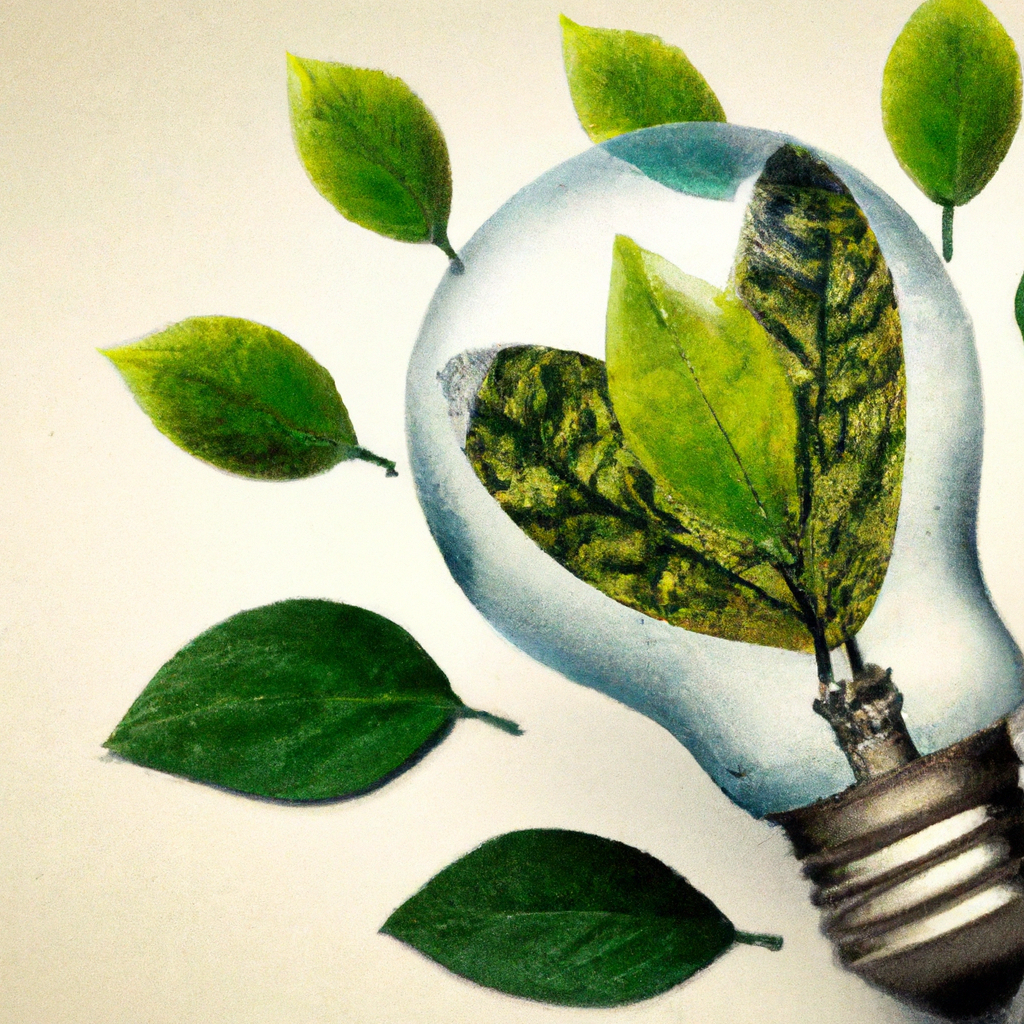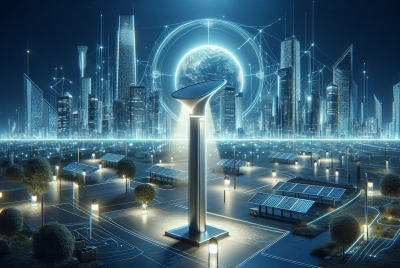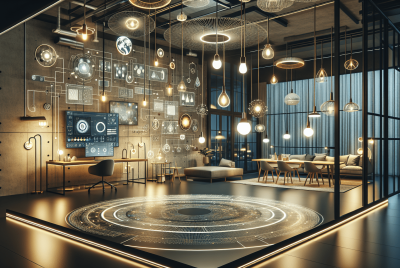Eco-Friendly Options: Sustainable And Green Home Lighting Choices
Looking to make your home more environmentally friendly? Then it’s time to shed some light on sustainable and green home lighting choices. In this article, we’ll explore the eco-friendly options available to help you create a more sustainable and energy-efficient home. From LED lights to solar-powered fixtures, these choices not only reduce your carbon footprint but also save you money in the long run. So get ready to embrace a greener lifestyle and illuminate your home with these sustainable lighting solutions.
Eco-Friendly Options: Sustainable and Green Home Lighting Choices
When it comes to choosing lighting for your home, there are numerous options available that not only provide efficient illumination but also have a positive impact on the environment. In this article, we will explore the various eco-friendly lighting choices that you can consider for your home. From LED lighting to solar-powered options, there are plenty of sustainable and green alternatives to traditional incandescent bulbs. Let’s dive in and discover the benefits of these eco-friendly lighting solutions.
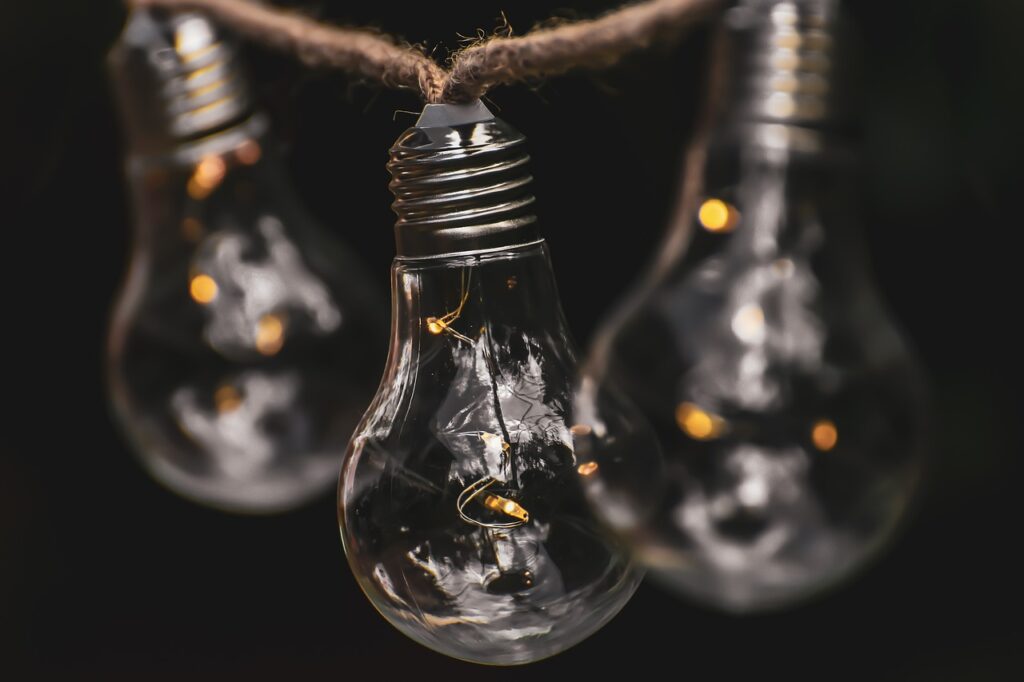
1. LED Lighting
1.1 Energy Efficiency
LED lighting is one of the most energy-efficient options available in the market today. LED bulbs consume up to 80% less energy than traditional incandescent bulbs, making them an excellent choice for reducing your energy consumption and utility bills. They convert almost all the energy they consume into light, minimizing wasted energy in the form of heat.
1.2 Longer Lifespan
LED bulbs have an exceptionally long lifespan compared to other lighting options. On average, LED bulbs can last up to 25 times longer than incandescent bulbs and up to 10 times longer than CFLs (Compact Fluorescent Lamps). This means fewer replacements, reduced waste, and overall cost savings in the long run.
1.3 Dimmable Options
LED bulbs offer convenient dimmable options, allowing you to adjust the brightness to fit your needs and create the desired ambiance in any room. Whether you prefer a cozy and relaxing atmosphere or bright and vibrant lighting, LED technology provides unmatched flexibility.
1.4 Instant On
Unlike CFLs, which may take a few moments to reach their full brightness, LED bulbs provide instant illumination as soon as you flip the switch. This instant on feature ensures that you have immediate light whenever you need it, without any delays or warm-up time.
1.5 Zero UV Emissions
LED lighting emits very minimal UV radiation, making it a safe choice for lighting valuable artwork, photographs, or any UV-sensitive materials. This not only helps protect your precious possessions but also ensures a healthier and safer environment for you and your loved ones.
2. Compact Fluorescent Lamps (CFLs)
2.1 Energy Efficiency
CFLs are another energy-efficient lighting option that offers significant energy savings compared to traditional incandescent bulbs. CFLs use approximately 75% less energy, generating less heat and reducing the strain on your electricity consumption.
2.2 Brightness
CFLs provide bright and efficient lighting, making them suitable for both residential and commercial applications. With advancements in technology, CFLs now produce light that is comparable in brightness to traditional incandescent bulbs while using much less energy.
2.3 Lifespan
CFLs have a relatively long lifespan of around 8,000 to 15,000 hours, depending on the specific bulb. This extended lifespan translates into fewer replacements, reducing waste and the overall cost of maintaining your home’s lighting system.
2.4 Mercury Hazards
It is important to note that CFLs contain small amounts of mercury, a toxic substance that can pose a risk if mishandled or improperly disposed of. While CFLs are safe to use in homes, it is essential to handle and dispose of them responsibly to avoid any potential hazards.
2.5 Recycling
Due to the presence of mercury in CFLs, it is crucial to recycle them properly once they reach the end of their life. Many communities offer recycling programs specifically designed for CFLs to ensure safe disposal and environmentally friendly handling of these bulbs.
3. Halogen Incandescent Bulbs
3.1 Energy Efficiency
While not as energy-efficient as LED or CFL options, halogen incandescent bulbs are more efficient than traditional incandescent bulbs. They use approximately 25% to 30% less energy, helping to reduce your electricity consumption and environmental impact.
3.2 Lifespan
Halogen incandescent bulbs have a relatively longer lifespan compared to traditional incandescent bulbs, making them a more sustainable lighting choice. With an average lifespan of around 1,000 to 3,000 hours, these bulbs tend to last longer and require fewer replacements.
3.3 Dimmable Options
Halogen incandescent bulbs offer dimmable options, allowing you to control the brightness of the light according to your preferences. This flexibility makes them suitable for creating the desired ambiance in various settings, from intimate dinners to movie nights with friends.
3.4 Proper Disposal
It is important to handle and dispose of halogen incandescent bulbs properly because they contain small amounts of halogen gas. These bulbs should be recycled through designated recycling programs to ensure both environmental safety and compliance with local regulations.
3.5 Cost-effectiveness
Halogen incandescent bulbs are generally more affordable compared to LED or CFL options. If you are on a tight budget and looking for a more energy-efficient alternative to traditional incandescent bulbs, halogen incandescent bulbs can be a viable and cost-effective choice.
4. Solar-Powered Lighting
4.1 Outdoor Lighting
Solar-powered lighting is an excellent option for illuminating outdoor spaces while harnessing the power of the sun. These lights rely on solar panels to charge their batteries during the day and automatically turn on at night, providing energy-efficient and sustainable lighting solutions for your outdoor areas.
4.2 Indoor Lighting
While solar-powered lighting is primarily associated with outdoor use, there are also indoor solar lighting options available. These systems utilize solar panels to capture sunlight and convert it into electricity, providing an additional eco-friendly lighting choice for your home.
4.3 Battery Storage
Many solar-powered lighting systems come with built-in battery storage, allowing them to store excess energy generated during the day for use during the night. This feature ensures that your lights continue to function even during cloudy days or when the sun is not directly available.
4.4 Installation Considerations
When opting for solar-powered lighting, it is essential to consider the placement of the solar panels to maximize their exposure to sunlight. Proper installation, orientation, and angle adjustments are crucial to ensure optimal performance and efficiency of your solar-powered lights.
4.5 Maintenance
Solar-powered lighting systems generally require minimal maintenance. However, it is important to regularly clean the solar panels to ensure maximum sunlight absorption. Additionally, periodic checks on the batteries and wiring are recommended to ensure continued functionality.
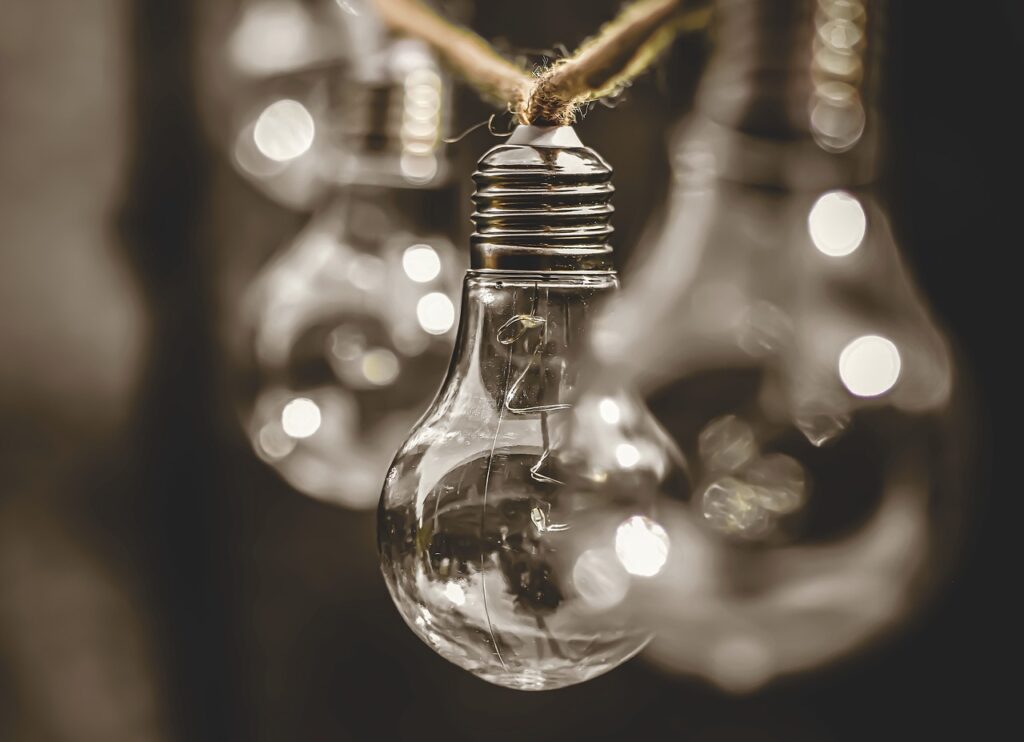
5. Natural Light Solutions
5.1 Skylights
Skylights are an excellent solution for bringing natural light into your home. These windows on your roof allow sunlight to enter the rooms from above, brightening up the space and reducing the need for artificial lighting during the day. Skylights come in various sizes and designs to suit different architectural styles and preferences.
5.2 Sun Tubes
Sun tubes, also known as solar tubes or light tubes, are another natural lighting solution that can be installed in rooms where conventional skylights may not be feasible. These tubes capture sunlight through a rooftop dome and use reflective material to channel the light into the room below, providing a budget-friendly and energy-efficient alternative.
5.3 Light Shelves
Light shelves are horizontal surfaces installed below windows to reflect natural light further into a room. The shelves act as a beam, bouncing sunlight onto the ceiling and walls, creating a brighter and more evenly distributed illumination. Light shelves are particularly effective in spaces with limited direct sunlight exposure.
5.4 Light Reflection
In addition to utilizing skylights, sun tubes, and light shelves, you can enhance natural lighting in your home by incorporating light-reflecting materials, such as mirrors or light-colored walls and floors. These surfaces help bounce and distribute natural light throughout the space, reducing the need for artificial lighting.
5.5 Sun Control Solutions
While natural light is desirable, it is also important to control its intensity and heat gain. Various sun control solutions, such as window coverings, films, or shading devices, can be implemented to reduce glare, regulate temperature, and protect against harmful UV radiation. These solutions ensure that you can enjoy the benefits of natural light while maintaining a comfortable and safe indoor environment.
6. Smart Lighting Systems
6.1 Energy Efficiency
Smart lighting systems integrate advanced technology to enhance energy efficiency. These systems offer features such as motion sensors, timers, and automated controls to ensure optimum light usage and minimize energy waste. By only illuminating spaces when needed, smart lighting systems contribute to overall energy savings.
6.2 Mobile Control
One of the key advantages of smart lighting systems is the ability to control and adjust the lighting from your smartphone or other smart devices. With this convenience, you can remotely turn on or off lights, adjust brightness, and create customized lighting scenes, all while optimizing energy consumption.
6.3 Voice Control
Many smart lighting systems are compatible with voice control assistants, allowing you to control lighting functions through simple voice commands. This hands-free operation provides convenience and ease of use, further enhancing the user experience.
6.4 Sensor Integration
Smart lighting systems often include various sensors, such as occupancy sensors, ambient light sensors, or temperature sensors. These sensors help optimize lighting usage by automatically adjusting lighting levels based on occupancy or natural light conditions, thereby minimizing energy waste.
6.5 Energy Monitoring
Another valuable feature of smart lighting systems is their ability to track and analyze energy usage. By providing insights into your energy consumption patterns, you can make informed decisions on how to further optimize your lighting system and reduce energy waste, resulting in both cost savings and environmental benefits.

7. Energy-Saving Lighting Controls
7.1 Timer Switches
Timer switches offer a simple yet effective way to save energy by automatically turning lights on and off at predetermined times. By setting timers according to your daily routines, you can ensure that lights are not left on unnecessarily, contributing to energy conservation and reducing utility costs.
7.2 Occupancy Sensors
Occupancy sensors, also known as motion sensors, detect the presence or absence of people in a room and adjust the lighting accordingly. These sensors automatically turn lights on when someone enters the space and turn them off when the area is unoccupied, eliminating the need for manual control and reducing energy wastage.
7.3 Daylight Sensors
Daylight sensors, also called photocells, measure the amount of natural light present in a room and dim or turn off artificial lighting when sufficient daylight is available. By effectively utilizing natural light, daylight sensors help conserve energy while maintaining comfortable illumination levels.
7.4 Light Dimmers
Light dimmers allow you to adjust the brightness of your lights according to your preferences and needs. By dimming the lights, you can reduce energy consumption while creating a cozy and inviting ambiance. Dimmers are particularly useful in areas where flexible lighting control is desired, such as dining rooms or living rooms.
7.5 Remote Control
Many lighting control systems offer remote control functionality, allowing you to operate your lights from anywhere in your home. This convenience eliminates the need to physically go to each room to turn lights on or off, reducing energy waste and improving overall lighting control.
8. Recycled and Eco-Friendly Lighting Fixtures
8.1 Sustainable Materials
Recycled and eco-friendly lighting fixtures are constructed using sustainable materials, such as reclaimed wood, recycled glass, or bamboo. These fixtures not only reduce waste by repurposing materials but also add an aesthetic appeal to your home while promoting eco-consciousness.
8.2 Upcycled Design
Upcycled lighting fixtures involve transforming discarded items or materials into unique and functional lighting pieces. By repurposing and giving new life to old objects, upcycled lighting fixtures help reduce waste and minimize the environmental impact of traditional manufacturing processes.
8.3 Energy-Efficient Features
In addition to their sustainable construction, many recycled and eco-friendly lighting fixtures incorporate energy-efficient components, such as LED bulbs or smart lighting technology. These features further enhance the overall efficiency and eco-friendliness of the fixtures.
8.4 Reduced Packaging
Manufacturers of recycled and eco-friendly lighting fixtures often prioritize sustainable packaging practices. By using minimal or recycled packaging materials, these companies aim to reduce waste and promote environmentally friendly practices throughout the entire product lifecycle.
8.5 Certification Labels
To ensure the authenticity and environmental credibility of recycled and eco-friendly lighting fixtures, look for certification labels such as Energy Star, Green Seal, or LEED (Leadership in Energy and Environmental Design). These labels indicate that the products meet specific sustainability and energy-efficiency standards, providing peace of mind and confidence in your eco-friendly lighting choices.
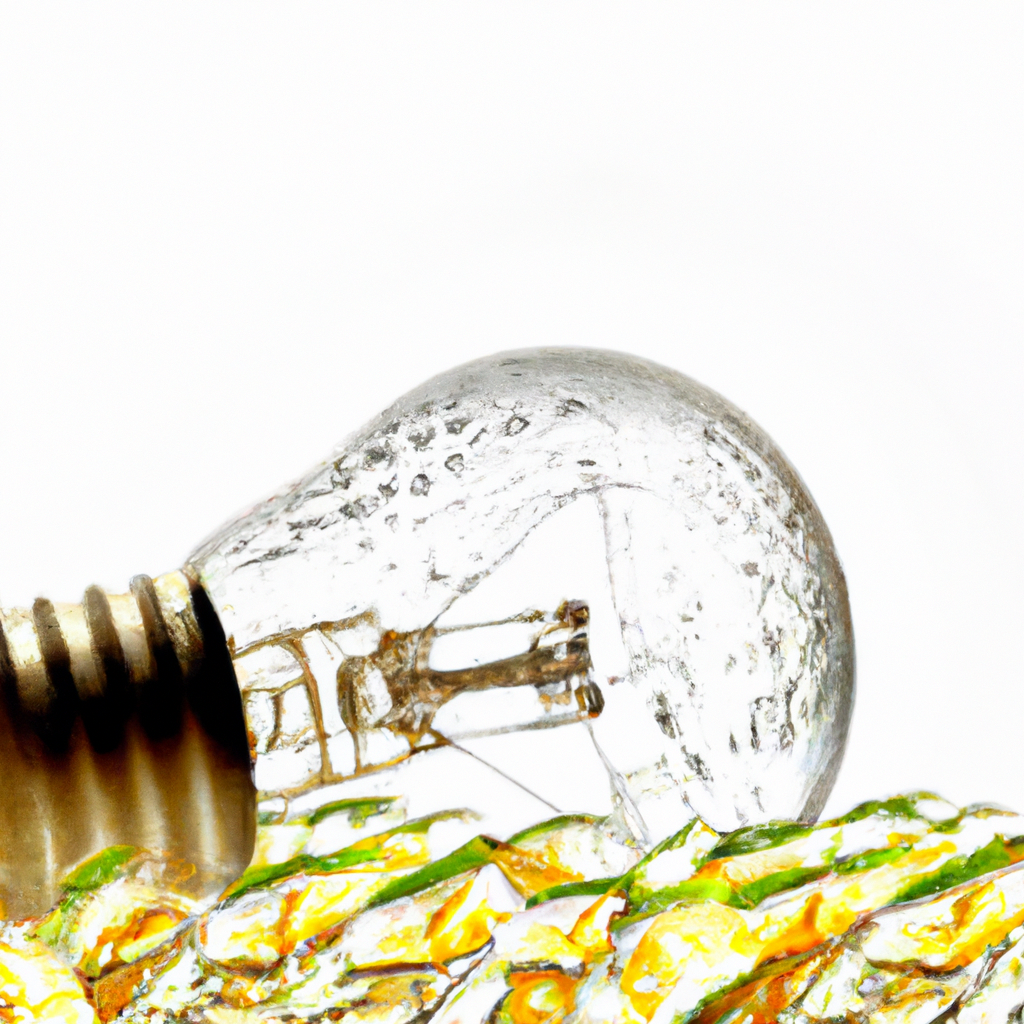
9. Low Voltage Lighting Systems
9.1 Energy Efficiency
Low voltage lighting systems operate on a lower voltage compared to standard lighting systems, resulting in significant energy savings. By utilizing transformers to convert high voltage to low voltage, these systems ensure optimized power consumption and reduced electricity usage.
9.2 Safety
Low voltage lighting systems are inherently safer due to the reduced voltage levels. The lower voltage significantly decreases the risk of electrical shock, making these systems a safer option for homeowners, particularly in areas where there is a higher chance of accidental contact with lighting fixtures.
9.3 Installation
Installing low voltage lighting systems is generally easier and less complex compared to traditional high voltage systems. The lower voltage levels reduce the need for extensive electrical work and allow for simpler wiring configurations, making it a viable DIY option for homeowners.
9.4 Lighting Design
Low voltage lighting systems offer versatility in lighting design, allowing for enhanced creativity and customization. With a wide range of fixtures, such as accent lights, spotlights, or pathway lights, you can create stunning lighting effects and highlight specific areas of your home or landscape.
9.5 Transformer Considerations
When choosing a low voltage lighting system, it is important to consider the quality and compatibility of the transformers. High-quality transformers are essential to ensure consistent power supply and reliable operation of the lighting system. Additionally, understanding the power capacity and voltage requirements of your lighting fixtures is crucial for proper installation and optimal performance.
10. Energy-Efficient Outdoor Lighting
10.1 LED Landscape Lighting
LED landscape lighting offers energy-efficient solutions for illuminating outdoor spaces, such as gardens, patios, or pathways. These lights consume minimal energy while providing enhanced visibility and aesthetic appeal. With a variety of designs and fixtures available, LED landscape lighting allows you to create stunning outdoor lighting designs while minimizing energy consumption.
10.2 Solar-Powered Outdoor Lighting
Solar-powered outdoor lighting is an excellent choice for areas without access to electricity or for those looking to reduce their carbon footprint. These lights use solar panels to charge their batteries during the day, eliminating the need for wiring or electrical outlets. Solar-powered outdoor lighting provides versatile and sustainable solutions for illuminating your outdoor spaces.
10.3 Motion Sensors
Motion sensors are commonly used in outdoor lighting systems to conserve energy. These sensors detect movement and automatically activate the lights, ensuring that they only operate when needed. Motion sensor technology enhances security, reduces energy waste, and provides convenience and peace of mind.
10.4 Timer Controls
Timer controls in outdoor lighting systems enable you to set specific times for the lights to turn on and off. This feature ensures that the lights are not left on during the day or when not required, conserving energy and extending the lifespan of the bulbs.
10.5 Dark Sky Compliant Fixtures
Dark sky compliant fixtures are designed to minimize light pollution and reduce unwanted light spillage into the night sky. By focusing the light downwards and preventing excessive brightness, these fixtures help preserve the natural beauty of the night sky and protect nocturnal wildlife.
In conclusion, there are numerous eco-friendly lighting options available for you to choose from when it comes to illuminating your home. From LED lighting and CFLs to solar-powered and natural light solutions, each option offers unique benefits that contribute to sustainability and energy efficiency. Additionally, smart lighting systems, energy-saving controls, and recycled fixtures further enhance the eco-consciousness of your lighting choices. By opting for these sustainable and green lighting solutions, you not only reduce your environmental impact but also create a more energy-efficient and inviting home. So, go ahead and make the switch to eco-friendly lighting, and let your home shine bright while minimizing your carbon footprint!
